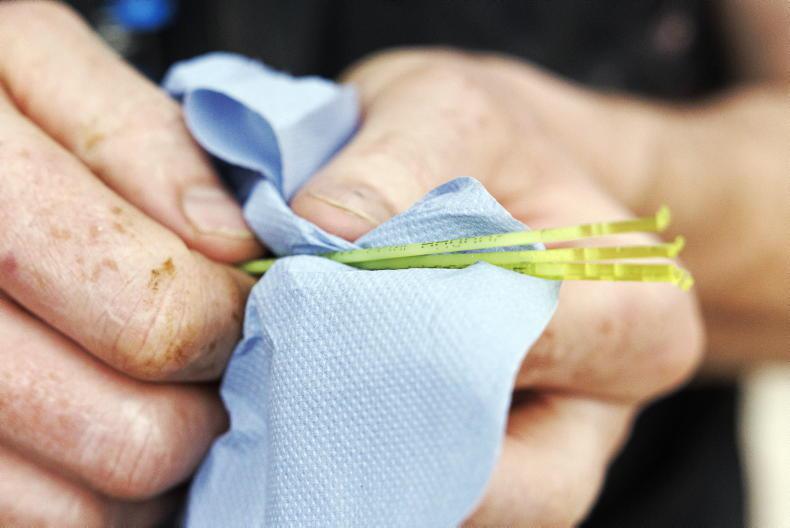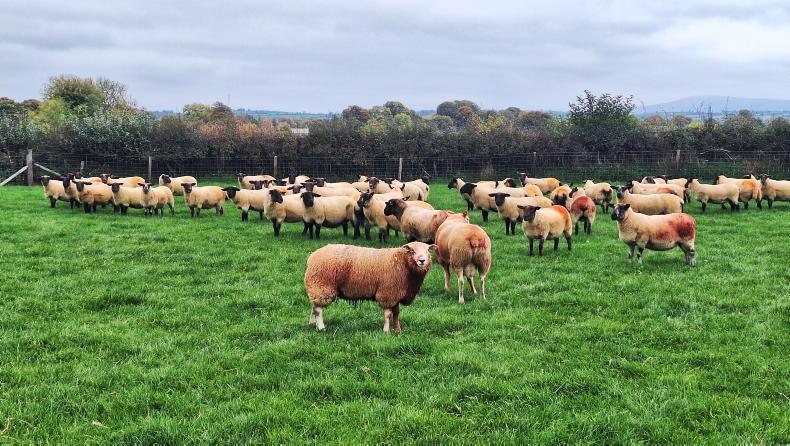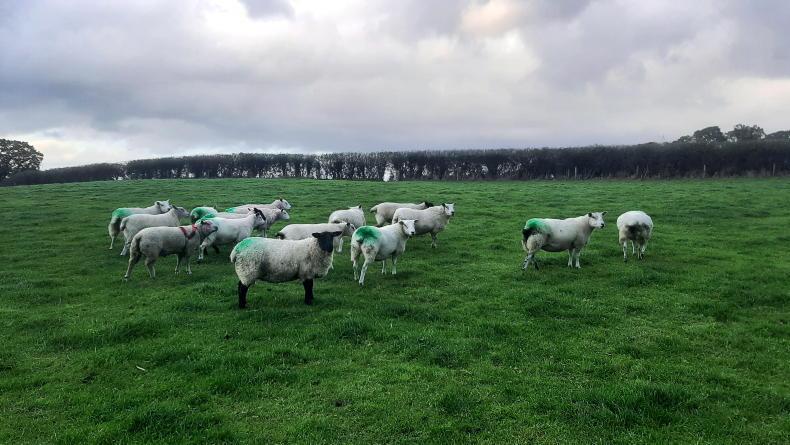Suckler farmers are still coming to terms with the latest changes to the ICBF replacement and terminal indexes.
While there was a lot of talk around where different breeds were going, farmers only got a chance to see their own individual figures last week and to grasp how the current update has affected their own herds.
As has been outlined on a number of occasions, any cow that was a genotyped four- or five-star cow in the Beef Data and Genomics Programme (BDGP) will continue to be an eligible cow under the Suckler Carbon Efficiency Programme (SCEP).
A dilemma
While this is welcome for SCEP participants, it has caused confusion at farm level. Some farmers have been in contact to say they have had cows dropping from five stars to two stars, yet they are still eligible for the scheme.
Does that mean they should breed replacements from these cows? Probably not, as it will be very hard for a two-star cow to breed a four- or five-star replacement to be eligible under SCEP in the final years of the scheme.
So, on the one hand, we have ICBF saying to farmers that two-star cows are eligible for the new scheme, and on the other, they are saying that five-star cows are a lot more profitable than two-star cows.
Herds with Limousin, Simmental and Belgian Blue dominant breeding in their suckler cows appear to have been hit hardest.
Some pedigree Simmental and Belgian Blue breeders are contemplating exiting the SCEP, given the upheaval that the latest update has caused.
One pedigree Limousin breeder in Carrick-on-Shannon last week outlined how a lot of his pedigree Limousin cows have dropped in star value, while his vasectomised Dexter-cross bull went up in value on the back of the update.
Taking a look at the breed averages in Figure 1, we can go some way into understanding why this has happened.
Averages
Figure 1 outlines the difference between the previous evaluation run and the current evaluation run for a number of different breeds.
The latest runs see the average replacement index of Commercial cows move from €90.70 to €93.10, an increase of just under €3. The Charolais breed has seen a reduction of €2, down to €73 from the previous €75.
One of the biggest reductions was seen in the Belgian Blue breed. They saw a fall of €41.60 in the profit potential of daughters bred by the average Belgian Blue bull in the database.
It was a similar story with the Simmental breed, with the average Simmental bull’s ability to breed profitable daughters falling by €30.
Dexter bull
One breed that appears to have bucked the trend is the Dexter. The latest evaluation run has seen the average Dexter bull jump by a massive €53, up from €64 in the last evaluation to €117 in the current evaluation.
That means that ICBF is saying that an average pedigree Dexter bull on the replacement index will breed daughters that will deliver €44 more profit when compared with the average pedigree Charolais bull.
The mature weight of a Dexter cow is 300kg to 350kg, with a typical carcase weight of between 120kg and 200kg.
Any evaluation model that puts a Dexter bull above a Charolais in terms of an overall profit index has to be questioned.

An average pedigree Dexter bull on the replacement index will breed daughters that will deliver €44 more profit when compared with the average pedigree Charolais bull - ICBF.
Dexters are a rare breed for a reason, because farmers found it hard in modern times to make money from them, so why are they coming to the top on indexes?
Figure 1 outlines the top 10 bulls in AI to breed replacements in the country. The Aberdeen Angus breed now dominates the list, with six out of the top 10 bulls being Aberdeen Angus bulls.
An example – Kealkil Prime Lad
Kealkil Prime Lad tops the list. He moves up from third position in the September run and comes in with a massive €279 of a replacement index.
He has been mainly used in the dairy herd to date, with 7,592 dairy calving records and just 778 suckler calving records. He’s +11.9kg for milk and -10.55 days for calving interval. One of the new sub indexes is days to slaughter and he’s -21.71 days on this figure – well above the all-breed average of -1.39 days.
One issue that has concerned some is his low carcase weight figure of 1.6kg, which is over 5kg below the Aberdeen Angus breed average and almost 16kg behind the average of all breeds.
Carcase weight
Interestingly, seven of the top 10 bulls on this list are 10kg or below for carcase weight.
While many understand the change in focus to lighter cows and an earlier finish in relation to climate change, some have questioned what the male calves will be like when these bulls are bred with suckler cows.
Ironically, some of the bulls on the top 10 replacement list would have been purchased by AI stations to service the growing dairy market, but these bulls have now come to the top of the suckler replacement list.
There are just three bulls on the current top 10 list with more suckler inseminations than dairy inseminations.
Suckler farmers are still coming to terms with the latest changes to the ICBF replacement and terminal indexes.
While there was a lot of talk around where different breeds were going, farmers only got a chance to see their own individual figures last week and to grasp how the current update has affected their own herds.
As has been outlined on a number of occasions, any cow that was a genotyped four- or five-star cow in the Beef Data and Genomics Programme (BDGP) will continue to be an eligible cow under the Suckler Carbon Efficiency Programme (SCEP).
A dilemma
While this is welcome for SCEP participants, it has caused confusion at farm level. Some farmers have been in contact to say they have had cows dropping from five stars to two stars, yet they are still eligible for the scheme.
Does that mean they should breed replacements from these cows? Probably not, as it will be very hard for a two-star cow to breed a four- or five-star replacement to be eligible under SCEP in the final years of the scheme.
So, on the one hand, we have ICBF saying to farmers that two-star cows are eligible for the new scheme, and on the other, they are saying that five-star cows are a lot more profitable than two-star cows.
Herds with Limousin, Simmental and Belgian Blue dominant breeding in their suckler cows appear to have been hit hardest.
Some pedigree Simmental and Belgian Blue breeders are contemplating exiting the SCEP, given the upheaval that the latest update has caused.
One pedigree Limousin breeder in Carrick-on-Shannon last week outlined how a lot of his pedigree Limousin cows have dropped in star value, while his vasectomised Dexter-cross bull went up in value on the back of the update.
Taking a look at the breed averages in Figure 1, we can go some way into understanding why this has happened.
Averages
Figure 1 outlines the difference between the previous evaluation run and the current evaluation run for a number of different breeds.
The latest runs see the average replacement index of Commercial cows move from €90.70 to €93.10, an increase of just under €3. The Charolais breed has seen a reduction of €2, down to €73 from the previous €75.
One of the biggest reductions was seen in the Belgian Blue breed. They saw a fall of €41.60 in the profit potential of daughters bred by the average Belgian Blue bull in the database.
It was a similar story with the Simmental breed, with the average Simmental bull’s ability to breed profitable daughters falling by €30.
Dexter bull
One breed that appears to have bucked the trend is the Dexter. The latest evaluation run has seen the average Dexter bull jump by a massive €53, up from €64 in the last evaluation to €117 in the current evaluation.
That means that ICBF is saying that an average pedigree Dexter bull on the replacement index will breed daughters that will deliver €44 more profit when compared with the average pedigree Charolais bull.
The mature weight of a Dexter cow is 300kg to 350kg, with a typical carcase weight of between 120kg and 200kg.
Any evaluation model that puts a Dexter bull above a Charolais in terms of an overall profit index has to be questioned.

An average pedigree Dexter bull on the replacement index will breed daughters that will deliver €44 more profit when compared with the average pedigree Charolais bull - ICBF.
Dexters are a rare breed for a reason, because farmers found it hard in modern times to make money from them, so why are they coming to the top on indexes?
Figure 1 outlines the top 10 bulls in AI to breed replacements in the country. The Aberdeen Angus breed now dominates the list, with six out of the top 10 bulls being Aberdeen Angus bulls.
An example – Kealkil Prime Lad
Kealkil Prime Lad tops the list. He moves up from third position in the September run and comes in with a massive €279 of a replacement index.
He has been mainly used in the dairy herd to date, with 7,592 dairy calving records and just 778 suckler calving records. He’s +11.9kg for milk and -10.55 days for calving interval. One of the new sub indexes is days to slaughter and he’s -21.71 days on this figure – well above the all-breed average of -1.39 days.
One issue that has concerned some is his low carcase weight figure of 1.6kg, which is over 5kg below the Aberdeen Angus breed average and almost 16kg behind the average of all breeds.
Carcase weight
Interestingly, seven of the top 10 bulls on this list are 10kg or below for carcase weight.
While many understand the change in focus to lighter cows and an earlier finish in relation to climate change, some have questioned what the male calves will be like when these bulls are bred with suckler cows.
Ironically, some of the bulls on the top 10 replacement list would have been purchased by AI stations to service the growing dairy market, but these bulls have now come to the top of the suckler replacement list.
There are just three bulls on the current top 10 list with more suckler inseminations than dairy inseminations.











SHARING OPTIONS